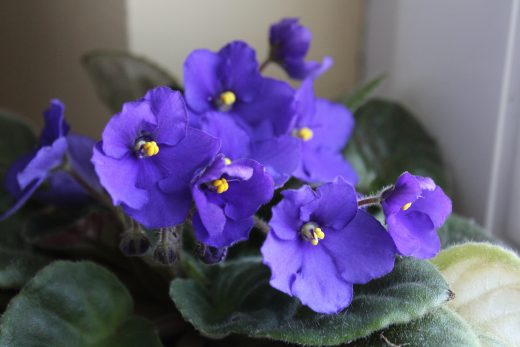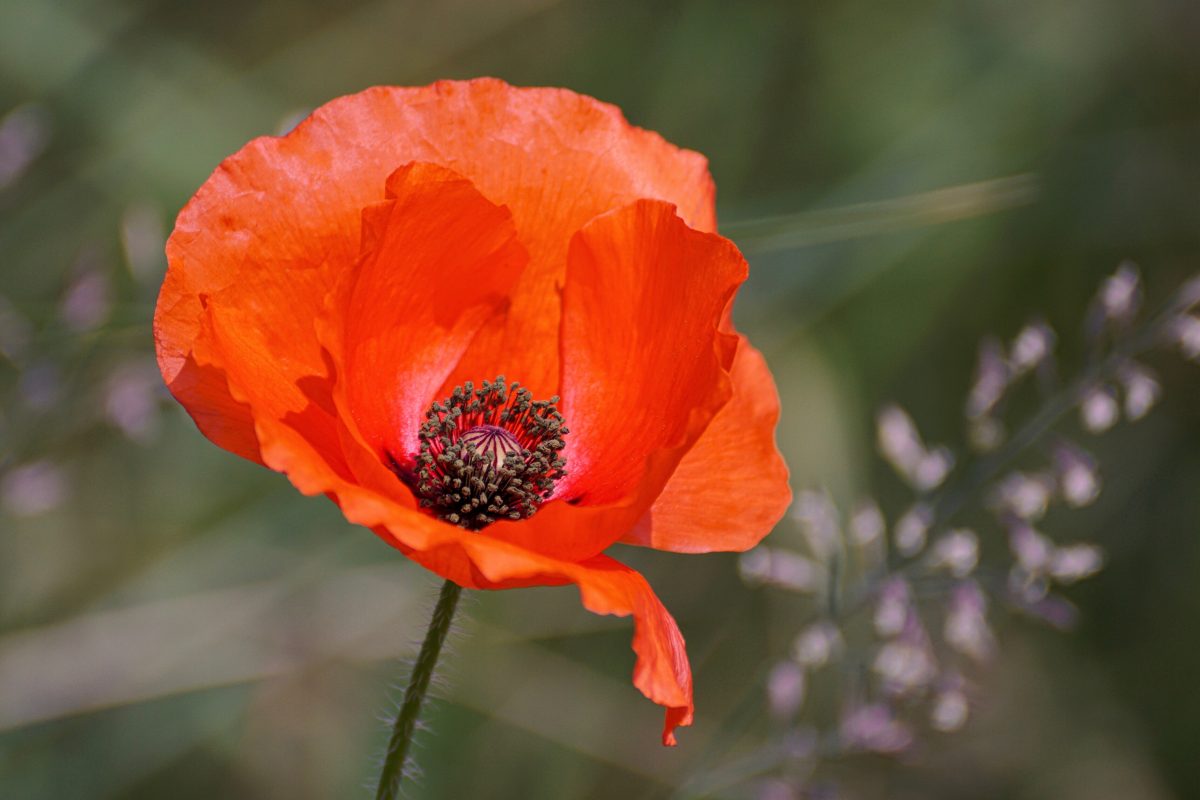African violets, or Streptocarpus, are one of the most popular houseplants on the market, but they can be difficult to care for. For many people, an African violet is their first introduction to houseplants.
These small houseplants work well in normal house temperatures (between 55 degrees F and 75 degrees F) and the standard lighting when indoors. They flower almost non-stop with flowers of white, purple, or blue hues over tantalizingly fuzzy leaves.
If you’ve been looking at these gorgeous, brightly colored flowers in your local nursery and wondering how to care for them yourself at home, here’s everything you need to know!
Are They Violets?

They aren’t actually related to the tiny and delicate violet flowers that are often mistaken for pansies. Their name comes from the bright, violet-colored flowers that are the most common color.
They are from Africa, however. They are native to the rainforests of East Africa, more specifically, Tanzania and Kenya. A German officer Walter von Saint Paul-Illaire discovered them there and sent their seeds back to Germany.
There are 10 species of African violets available today and they come in two growing habits, trailing or rosette. Trailing violets cascade or weep and grow multiple stems. Blossoms will flower from each of these stems. The rosette type has one main stem and the flowers will bloom from this central point.
Planting
African violets need a potting mix that drains well. While you can use all-purpose potting soil, there is an African violet potting mix is designed to maintain the precise environment they like.
Pots: African violets like smaller pots that you’ll repot every few years. Repotting them replenishes the nutrients in the soil. Don’t plant them in too big a pot. Keeping them in smaller pots and a little bound actually encourages more flowers.
When repotting, make sure to keep them as shallow as they were in their former pot. The stems of African Violets are incredibly susceptible to rot and shouldn’t be buried in the soil where they’ll be exposed to more moisture.
Caring For African Violets
It’s best to keep your violets away from any drafty windows over the winter. There are some varieties that are more tolerant to higher or colder temperatures, but it’s best to be cautious.
Other than the main steps below, you’ll also find that the fuzzy nature of the leaves will collect dust and dirt. You can easily keep the leaves clean by brushing them regularly with a soft bristled paintbrush.

Watering
It’s important to not over water your African Violets. The soil should be kept a little moist, but not too much. As mentioned before, the stems of African Violets are soft and can rot very easily if exposed to too much water.
When you’re watering use room-temperature water. Cold water can actually mark the leaves.
Make sure to water from the bottom of the plant and not over the top. Much like the stems, the soft leaves are also susceptible to rot and a fungal infection.
Light Levels Are Important
African violets need bright, indirect sunlight. While it’s not critical to place your African violet in a sunny spot, it is important that you keep it away from direct sunlight and windows that receive direct sunlight. These plants should not be placed in front of a window that faces south or west. Windows oriented east or north would give them the best lighting without burning their tender leaves.
If you don’t have the best window lighting, you can use artificial lighting. Fluorescent or LED plant bulbs are a great way to add to the natural lighting in your home. Make sure they get light from 6 to 12 hours per day.
If you’re African Violet isn’t getting enough light, you’ll find the leaves turn a dark green color and become thin with thinning stems. Too much light shows with either burns to the leaves or they turn a bright green color to an almost bleached color.
Nutrients
The most important thing to know about African violets is that they are not heavy feeders. If you give them too much fertilizer, they will show signs of nutrient burn and the leaves will turn yellow or brown. You’ll only need to fertilize every few weeks during their natural growing season, or spring and summer.
They don’t need to be fertilized all the time, only when you notice signs that they need some nutrients. If growth slows down or starts to produce thin foliage and stems, or you see pale or yellow leaves then slowly start to introduce a high phosphorus plant food.
When it comes to African Violets, you’ll have more of a problem with over-fertilizing. Soil mixes come with a lot of nutrients included and it’s unlikely you’ll need to add more before you repot your plant.
Flowers
To encourage continued flowering, you’ll want to deadhead the spent blossoms. This is easy to do. As the blossoms fade, they become loose and you can rock it back and forth until it pops away from the stem.
Don’t remove the entire flower cluster at the same time. You only need to remove each flower as they fade.
Pests & Diseases
African violets are prone to several pests and diseases, and it can rot easily whether it’s the roots, stems, or leaves.

- Mites
Two Types Of Mites are a common problem for African Violets – Cyclamen Mites and Spider Mites.
Unfortunately, cyclamen mites are very difficult to irradicate completely. You’re better off disposing of the plant before it infects others.
Spider mites are easier to deal with using pesticides and other home remedies. It’s always best to isolate infected plants during treatment to keep your other houseplants safe.
- Mildew And Rot
Powdery mildew can also infect your African Violets due to its preference for lower light conditions. Powdery mildew shows as fuzzy white spots on stems and leaves.
Conclusion
African violets are a stunning and easy plant to care for, even if they give you a little trouble now and then. As you can see, with just a little knowledge you can add a pop of color to your home with ease.



